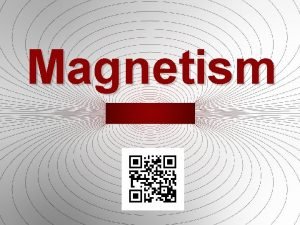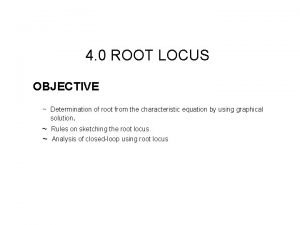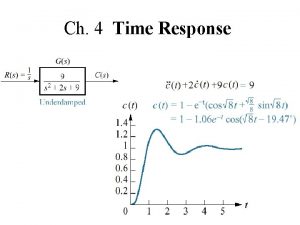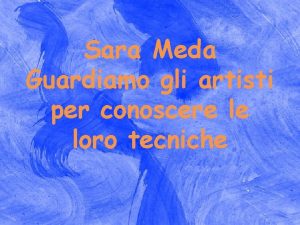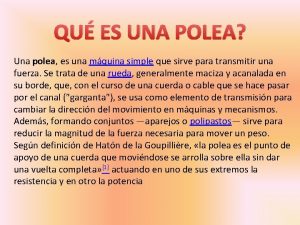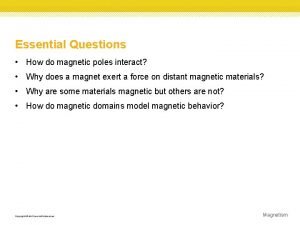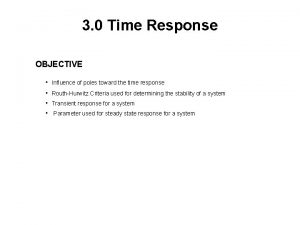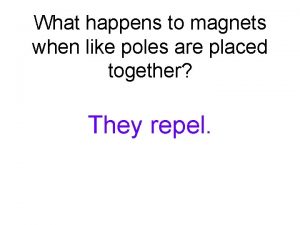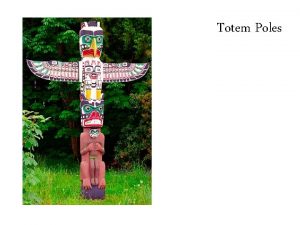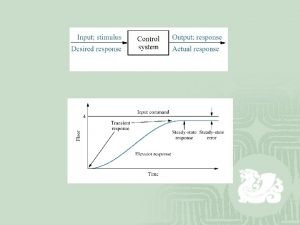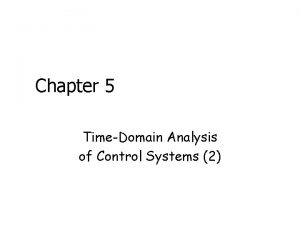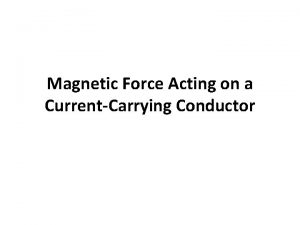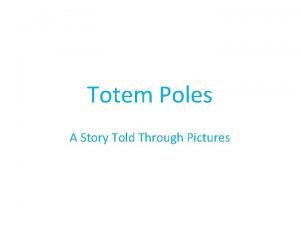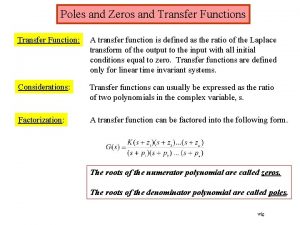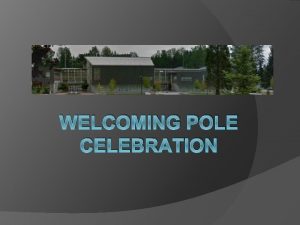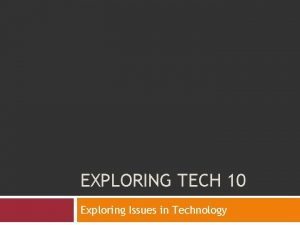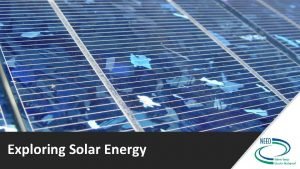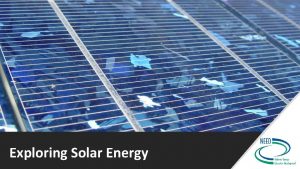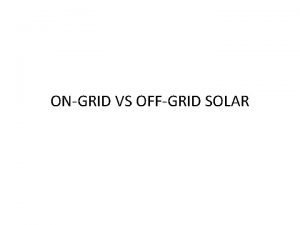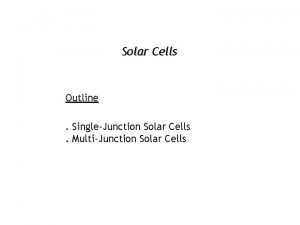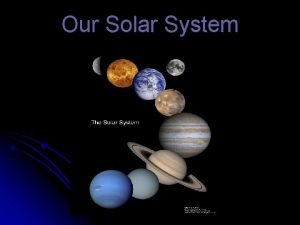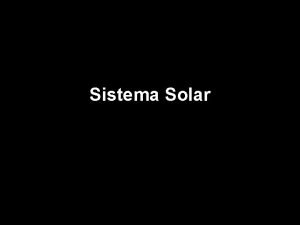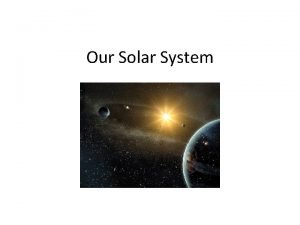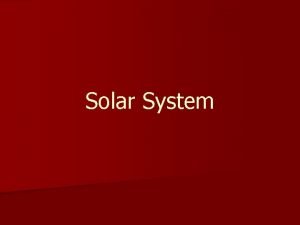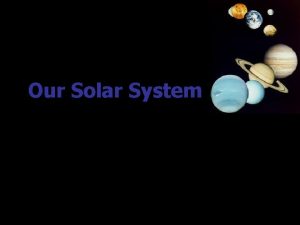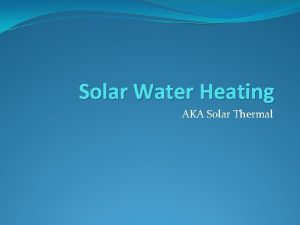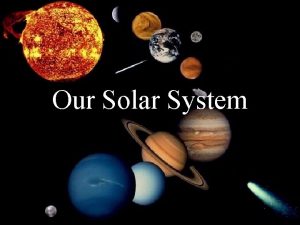Exploring The Solar Poles From The L 1

















- Slides: 17

Exploring The Solar Poles From The L 1 Perspective Matthew J West – Royal Observatory of Belgium SDO Workshop – Ghent - 2018

What Do We Know About The Poles So Far? ? ?

Exploring The Solar Poles From The L 1 Perspective Matthew J West – Royal Observatory of Belgium Ulysses And The Poles Courtesy of ESA

Exploring The Solar Poles From The L 1 Perspective Matthew J West – Royal Observatory of Belgium Ulysses And The Poles The solar poles are relatively unexplored regions of the solar atmosphere, this is due to a lack of satellites that have travelled over and through them. The Ulysses mission (1990 -2009) was the only mission to truly explore these regions. Thanks to its orbit, Ulysses probed the Sun at a range of large of latitudes and traversed the southern and northern polar regions. The mission included several instruments that measured the “in-situ” plasma properties, but alas did not

Exploring The Solar Poles From The L 1 Perspective Matthew J West – Royal Observatory of Belgium The Poles From The Ecliptic Portions of the solar poles can of course be observed with our current menagerie of solar observing instruments, such as SWAP, SUVI, AIA, EIT and EUVI, amongst others. However, these are mainly located around the ecliptic. Courtesy of NOAA

Exploring The Solar Poles From The L 1 Perspective Matthew J West – Royal Observatory of Belgium Reconstructing The Poles We can take advantage of the optically thin nature of the EUV observations to try and reconstruct what we might see in the polar regions.

Reconstructing The Poles

Exploring The Solar Poles From The L 1 Perspective Matthew J West – Royal Observatory of Belgium Reconstructing The Poles Basic polar reconstructions, using the techniques described in Figure 2, with AIA 193Å (left) and SWAP 174Å (right).

Exploring The Solar Poles From The L 1 Perspective Matthew J West – Royal Observatory of Belgium Reconstructing The Poles

Exploring The Solar Poles From The L 1 Perspective Matthew J West – Royal Observatory of Belgium Reconstructing The Poles We are currently constructing polar images of the Northern solar pole on a daily basis, which can be found here: proba 2. oma. be/swap/data/polar_sun/S WAPpolar. Image. With. Edge/ and here: proba 2. oma. be/swap/data/polar_sun/S WAPpolar. Image. Without. Edge/

What Needs To Be Done?

Exploring The Solar Poles From The L 1 Perspective Matthew J West – Royal Observatory of Belgium What Needs To Be Done? Room for improvement - Over the coming months you can expect to see several improvements in the way the above images are generated. These will include: The technique currently assumes that all the emission is coming from a single plane. This will be refined by using a single strip of pixels around the solar disk. Back projection tomography will be implemented to more accurately reconstruct the pole following the techniques described in de Patoul. Sol Phys, 2011.

Exploring The Solar Poles From The L 1 Perspective Matthew J West – Royal Observatory of Belgium What Needs To Be Done? An improved radial filter and differential rotation algorithm will be applied to help improve the saturated limb contribution. The line generated due to using half a Carrington rotation of images will be reduced using some smoothing and interpolation techniques. Different wavelengths from the SDO/AIA and NOAA/SUVI mission will be used to see differing structures observed in different wavelengths and temperatures.

Why Are We Interested?

Exploring The Solar Poles From The L 1 Perspective Matthew J West – Royal Observatory of Belgium Why Are We Interested? There are still several open questions and areas of research concerning this region, these include: The study of the polar coronal holes and their boundaries, in particular studying the dynamics / processes occurring between the open and closed magnetic flux at the boundaries (e. g. interchange reconnection), and on a longer time-scale the formation of the polar coronal holes. Rappazzo et al. APJL 2012

Exploring The Solar Poles From The L 1 Perspective Matthew J West – Royal Observatory of Belgium Why Are We Interested? Wave propagation in the polar regions has not been fully explored, especially Alfvén wave propagation. In particular, looking for further evidence of wave emergence from below (spicules) or waves generated by reconnection (brightenings) higher up in the region. Ulysses revealed one pole of the Sun is cooler than the other. Studying this region may help reveal heating processes occurring in the regions. Tavabi et al. A&A 2015

Exploring The Solar Poles From The L 1 Perspective Matthew J West – Royal Observatory of Belgium Why Are We Interested? On a larger-scale, global waves (Rossby-like) related to coronal hole boundaries. Courtesy of Mc. Intosh
 Inexhaustible source of energy
Inexhaustible source of energy Wholesalesolar.com/solar panels
Wholesalesolar.com/solar panels Magnetic field lines that curve away from each other show
Magnetic field lines that curve away from each other show Hammock carry status of the injured person
Hammock carry status of the injured person Complex poles
Complex poles System response
System response Pollock blue poles
Pollock blue poles Polea dibujo
Polea dibujo Groups of atoms with aligned magnetic poles are called
Groups of atoms with aligned magnetic poles are called Complex poles
Complex poles What happens when like poles are placed together
What happens when like poles are placed together Why are there few examples of totem poles from before 1900?
Why are there few examples of totem poles from before 1900? Underdamped poles
Underdamped poles Maximum overshoot formula
Maximum overshoot formula A wire suspended vertically between the poles of a magnet
A wire suspended vertically between the poles of a magnet Pictures of totem poles
Pictures of totem poles Poles of transfer function
Poles of transfer function Band pass filter transfer function
Band pass filter transfer function


